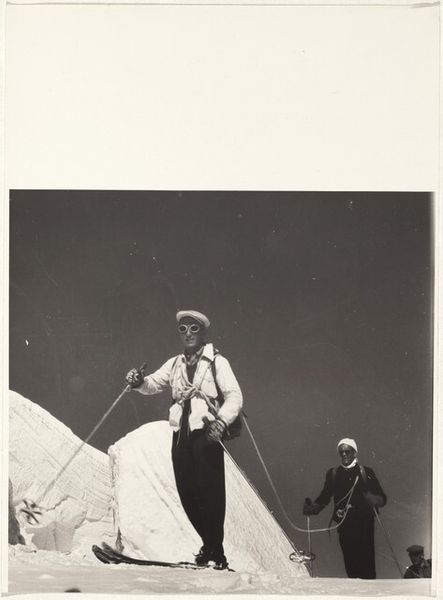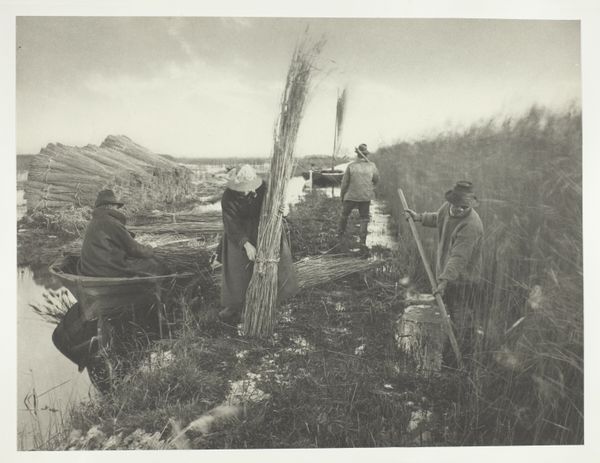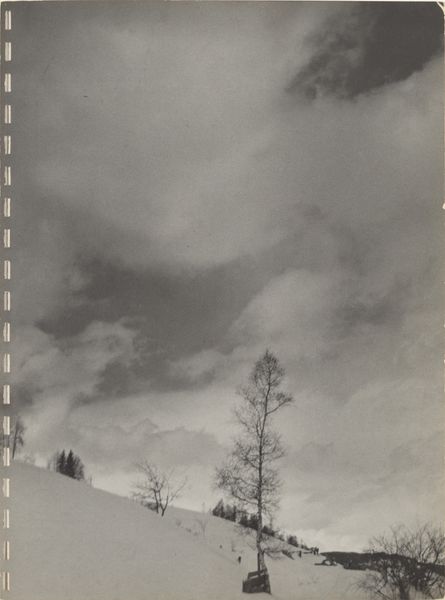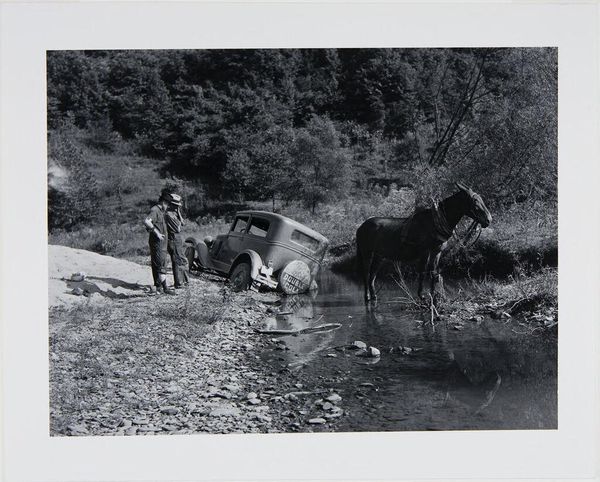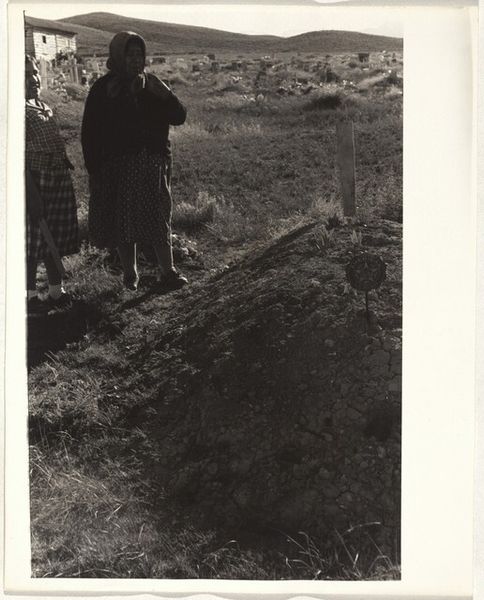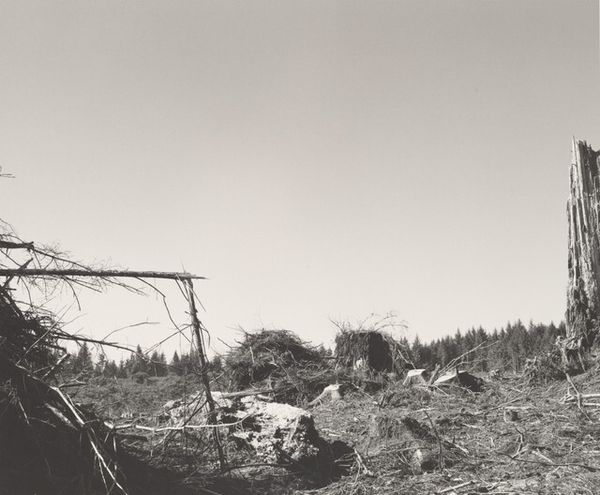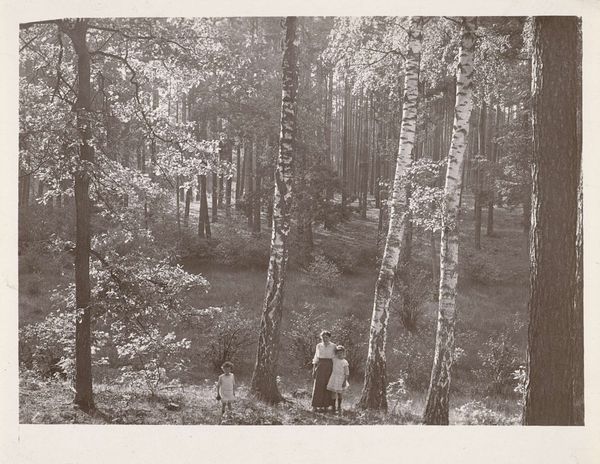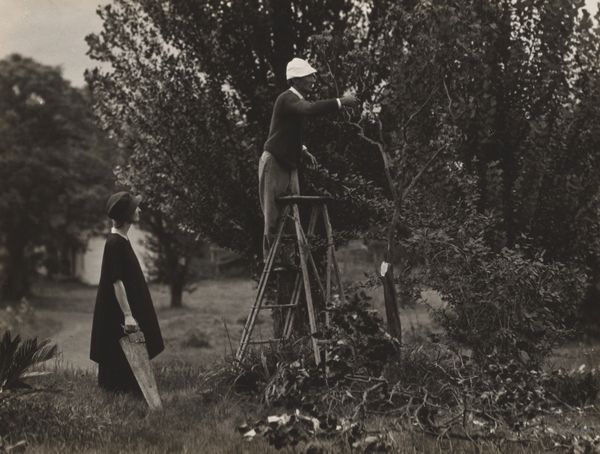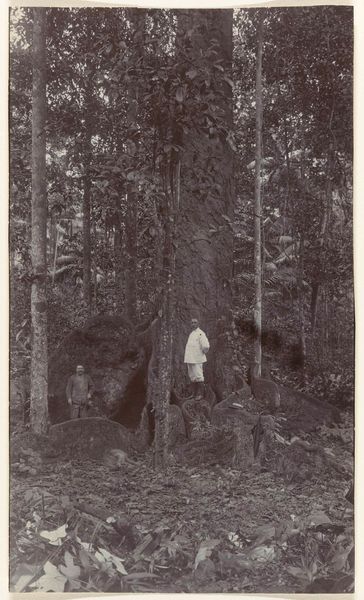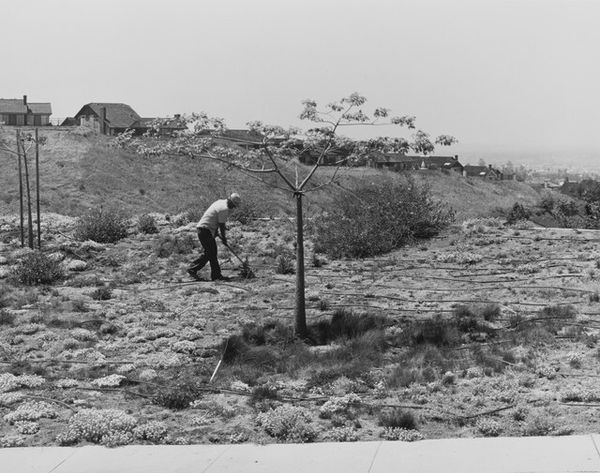
#
excavation photography
#
competition photography
#
black and white photography
#
countryside
#
outdoor photo
#
outdoor loving
#
couple photography
#
monochrome photography
#
outdoor activity
#
shadow overcast
Dimensions: sheet (trimmed to image): 21.4 x 16.6 cm (8 7/16 x 6 9/16 in.)
Copyright: National Gallery of Art: CC0 1.0
Editor: This is Robert Frank's "Farmer--Landscape," taken sometime between 1941 and 1945. The black and white photograph features a man with a rake walking uphill, and I am struck by the simple, almost stark depiction of rural life. What stands out to you in this piece? Curator: This photograph encapsulates a powerful connection between labor and land. Consider the material conditions of its production: film, camera, darkroom. Frank uses these tools to document a farmer’s labor, a stark contrast perhaps to the industrial advancements burgeoning during that time. The photograph itself becomes a commodity, documenting a traditional mode of production. How does the farmer’s rake, a simple tool, relate to broader themes of work and value? Editor: That's fascinating! It highlights the disparity between mechanized and manual labor, doesn't it? I hadn't considered the socio-economic implications of showing such an everyday task in contrast to industrial progress. Curator: Exactly. Think about the choice of black and white. Does it romanticize the past, or does it present a stark reality, stripped of any artifice? It also begs the question: where will the crops of the land go? And how does the photographic image compare and contrast to an agriculture good? Editor: The absence of color definitely lends it a timeless feel, maybe even suggesting a struggle regardless of the era. It feels more immediate this way, emphasizing the physicality of the farmer’s work. I guess I'm now pondering on how a tangible crop or material is connected to a farmer. Curator: And remember the scale of the photograph itself. It's a contained, reproducible object, offering a certain accessibility, a potential form of consumption for a wider audience. Consider this carefully when considering its historical and social impact. Editor: So, in its own way, the photograph highlights how different modes of labor create an uneven economic environment through documentation and tangible goods. I now see that it is a powerful reflection on production! Curator: Precisely! Art making isn't isolated. This photo helps us think critically about the means of production beyond just the image itself.
Comments
No comments
Be the first to comment and join the conversation on the ultimate creative platform.
